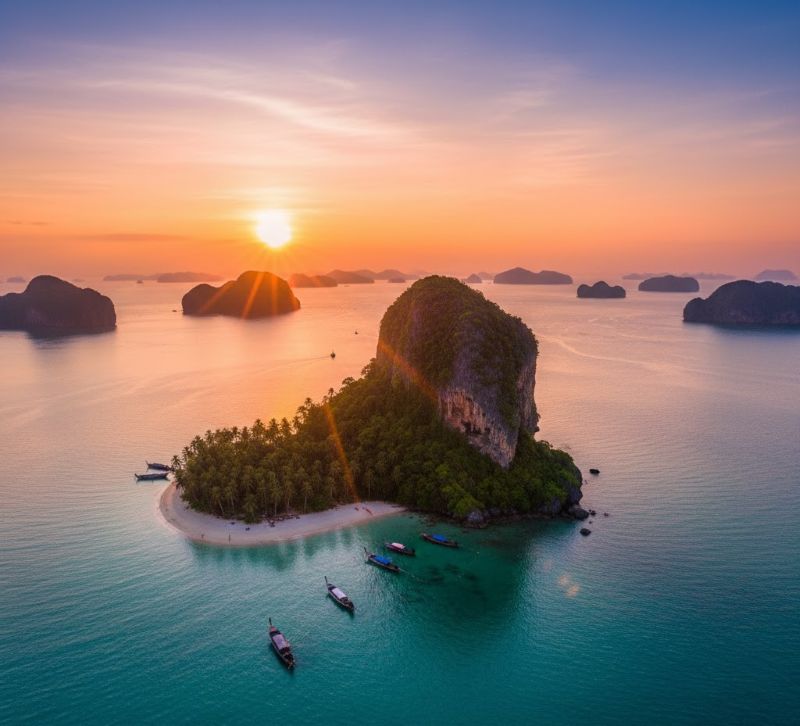Wednesday, August 6, 2025
The Trip.com Group’s Tourism Innovation Awards have become a prestigious symbol of excellence, celebrating groundbreaking travel experiences that transcend traditional tourism. In 2025, the awards spotlight innovative destinations across the globe that have successfully embraced immersive technologies, sustainability, and cultural heritage. This year’s winners span across six countries—the United States, Saudi Arabia, Japan, South Korea, the United Kingdom, and China—and showcase the future of tourism by focusing on creating memorable and meaningful travel experiences.
The winners, which include technologically immersive attractions, sustainably designed resorts, and culturally rich destinations, underscore a larger trend in the tourism industry: travelers are seeking more than just traditional sightseeing; they are searching for experiences that resonate on a deeper level. From panda sightings in Chengdu to immersive art shows in Las Vegas, the innovation happening within these award-winning projects offers a glimpse into the future of tourism.
The Winners of Trip.com’s Tourism Innovation Awards 2025
This year, Trip.com Group recognized outstanding contributions in the areas of technological innovation, sustainability, and cultural tourism. Here are the global winners of the 2025 Tourism Innovation Awards, which are expected to shape the future of global tourism:
1. Afterlife Show at the Sphere, Las Vegas, United States
The Afterlife Show at the Sphere in Las Vegas is a remarkable example of how immersive technology is reshaping entertainment. This cutting-edge experience blends visual art, interactive music, and virtual reality to create an unparalleled sensory journey for visitors. The Sphere, with its state-of-the-art technology, offers a 360-degree immersive experience that transports attendees into a world beyond imagination. Winning the award for technological innovation, the show represents the growing demand for multi-sensory experiences in tourism, where visitors can engage with destinations in completely new ways.
2. ABBA Voyage Concert, London, United Kingdom
ABBA Voyage in London offers a perfect blend of music, technology, and nostalgia, drawing in fans of all ages. The concert, featuring digital avatars of the famous pop group, has redefined the live music experience, pushing the boundaries of what is possible in entertainment and tourism. The concert has captivated global audiences by offering a unique fusion of real and virtual performances, where music lovers from around the world can gather to experience ABBA’s hits through immersive technology. The success of this show illustrates the growing intersection between tourism and entertainment, where visitors are encouraged to travel not just for sights, but for shared cultural experiences.
3. teamLab Borderless: MORI Building DIGITAL ART MUSEUM, Tokyo, Japan
Tokyo’s teamLab Borderless has revolutionized the concept of art museums by creating an experience that is dynamic, interactive, and constantly changing. The MORI Building DIGITAL ART MUSEUM is a cutting-edge art exhibition that uses digital technology to engage visitors with immersive and interactive installations. The museum’s exhibits blur the lines between art and technology, offering visitors the chance to engage with works of art in ways that were once unimaginable. As one of the most popular attractions in Tokyo, the museum exemplifies how technology-driven art is becoming an integral part of the tourism experience, particularly in tech-savvy destinations like Japan.
4. Starfield Library, Seoul, South Korea
Located in Seoul’s Starfield COEX Mall, the Starfield Library is one of the most Instagrammable spots in South Korea. The library’s unique design features walls lined with over 13,000 books, creating a mesmerizing space that invites both book lovers and photographers. The library’s visual appeal, combined with its role as a community hub, highlights the growing importance of cultural spaces in the tourism sector. Visitors come not only to borrow books but also to experience the beauty of the space itself, offering a mix of leisure and culture that appeals to both locals and tourists alike.
5. Shebara Resort, Umluj, Saudi Arabia
Saudi Arabia’s Shebara Resort is redefining luxury tourism with its sustainable design that integrates seamlessly into the natural landscape. Located in the pristine waters off the coast of Umluj, Shebara Resort’s suspended spherical villas offer breathtaking views of coral reefs while minimizing environmental impact. The resort, which won the Sustainability Innovation Award, epitomizes Saudi Arabia’s shift towards eco-friendly luxury in tourism. It provides a high-end experience while ensuring minimal disruption to the surrounding ecosystems. This project is part of a broader push by the Saudi government to position the country as a leader in sustainable tourism in the Middle East.
6. Desert x AIUIa, Al-Ula, Saudi Arabia
The Desert x AIUIa exhibition in Saudi Arabia combines art with nature, offering travelers an opportunity to experience the country’s rich cultural history while engaging with cutting-edge art. This open-air exhibition in the ancient desert region of Al-Ula invites artists to create works that engage with the natural landscape of the area. The exhibition promotes environmental conservation and cultural dialogue, highlighting Saudi Arabia’s growing emphasis on sustainable tourism. Visitors can experience the stunning desert landscapes while exploring art that reflects the region’s history and its role in global conservation efforts.
7. Panda Family Wins Hearts Worldwide, Chengdu, China
The panda family in Chengdu is one of the most iconic symbols of wildlife tourism in China. At the Chengdu Research Base of Giant Panda Breeding, tourists can interact with these lovable creatures while contributing to efforts to protect endangered species. The attraction’s focus on panda conservation has turned it into a major tourism destination, with panda-related merchandise and experiences driving economic impact. The popularity of the pandas showcases how wildlife tourism and cultural tourism are intertwined, with travelers seeking to engage with nature and contribute to global conservation efforts.
The Influence of Social Media Trends on Tourism
A significant driver of tourism innovation is social media, which has transformed how people discover and share travel experiences. Viral locations, such as King’s Cross Station in London and the Starfield Library in Seoul, have drawn massive crowds based on their visual appeal and Instagram-worthiness. Social media platforms have become cultural tourism hubs, influencing decisions on where to travel and what experiences to seek. This trend highlights the growing intersection between social media and tourism, where digital buzz can translate into real-world popularity.
Impact on Global Tourism and Local Economies
These award-winning destinations and projects highlight the increasing demand for unique, immersive, and sustainable travel experiences. The Tourism Innovation Awards not only celebrate cutting-edge tourism experiences but also have a significant impact on local economies. As more travelers seek meaningful connections and culturally rich experiences, destinations that offer innovative and sustainable travel experiences are likely to see increased visitation and economic benefits.
As technology-driven tourism becomes more mainstream, destinations like Japan, Saudi Arabia, and South Korea are positioning themselves as leaders in this evolving market. The Tourism Innovation Awards serve as a reminder that the future of tourism will be defined by innovation, sustainability, and the growing demand for experiences that offer personal connections to culture, nature, and history.



